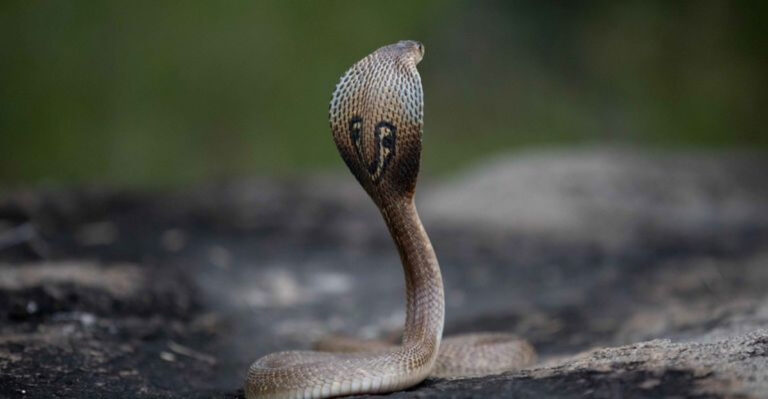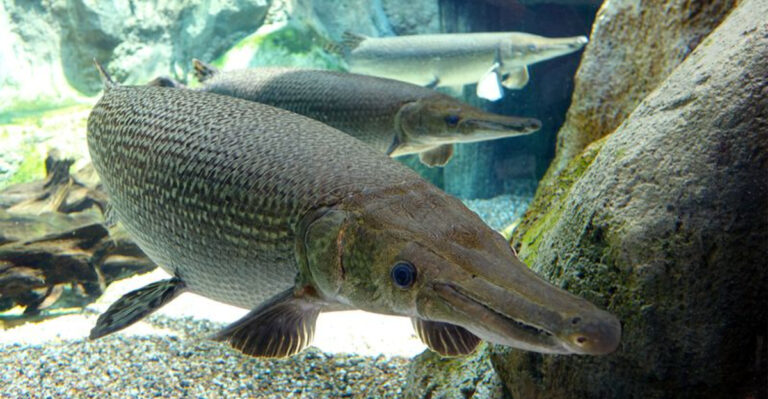Strange Prehistoric Discoveries: Ancient Fish Had Front And Back Legs
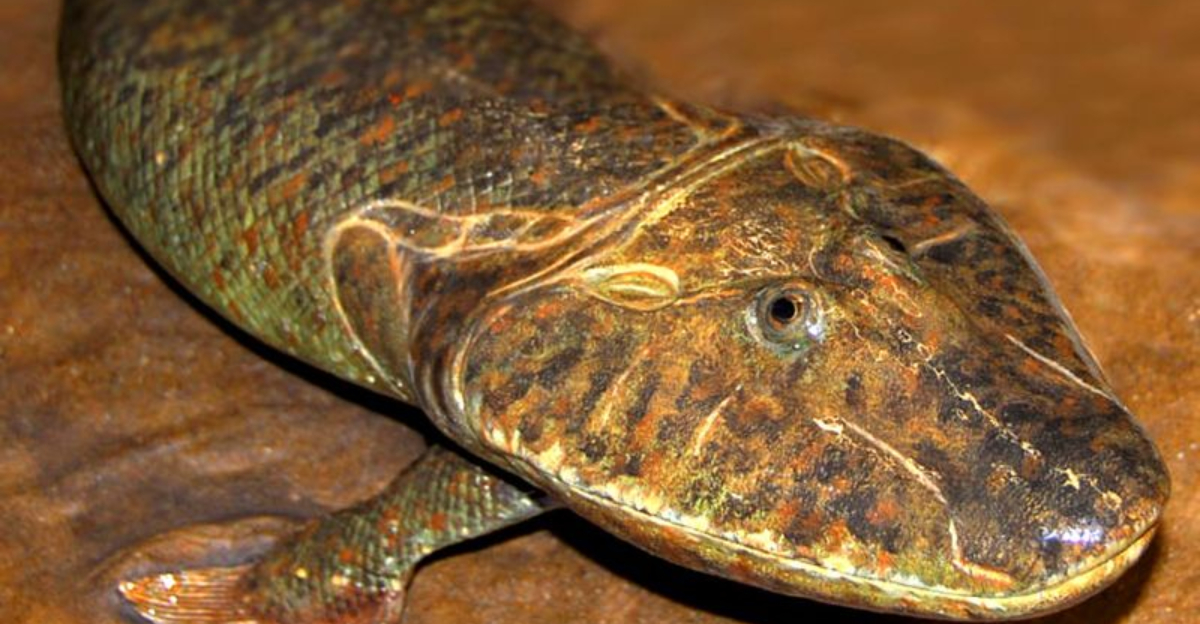
Millions of years ago, some fish developed something extraordinary – actual legs! These weird creatures bridged the gap between fish and land animals, showing us how life crawled out of the oceans.
Scientists have uncovered amazing fossils that tell the story of these strange ancient swimmers that could walk, revealing a fascinating chapter in our evolutionary history.
1. Acanthostega Had Eight Fingers Per Hand
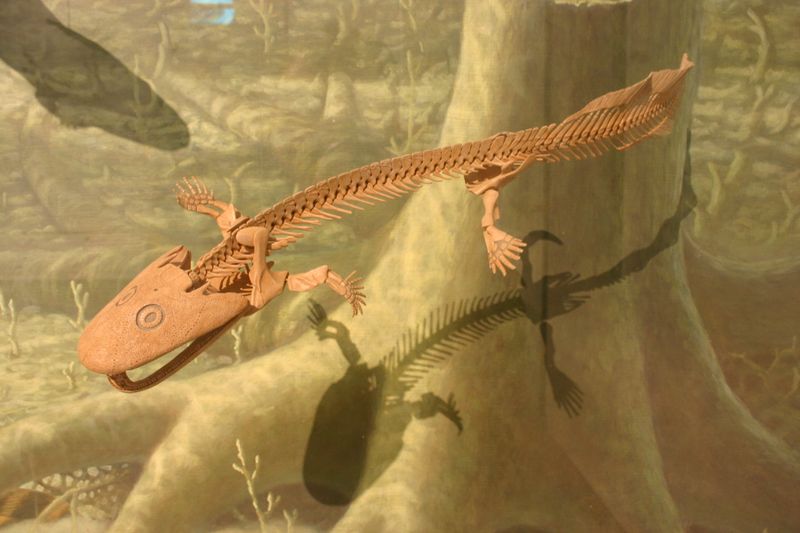
Living about 365 million years ago, Acanthostega sported not five, but eight fingers on each of its front limbs! This unexpected digit count puzzled paleontologists for years.
Despite having legs, Acanthostega couldn’t actually walk on land. Its limbs were too weak to support its body weight outside water. Instead, these appendages likely helped it navigate through dense underwater vegetation.
2. Ichthyostega: The Pioneer Land Explorer
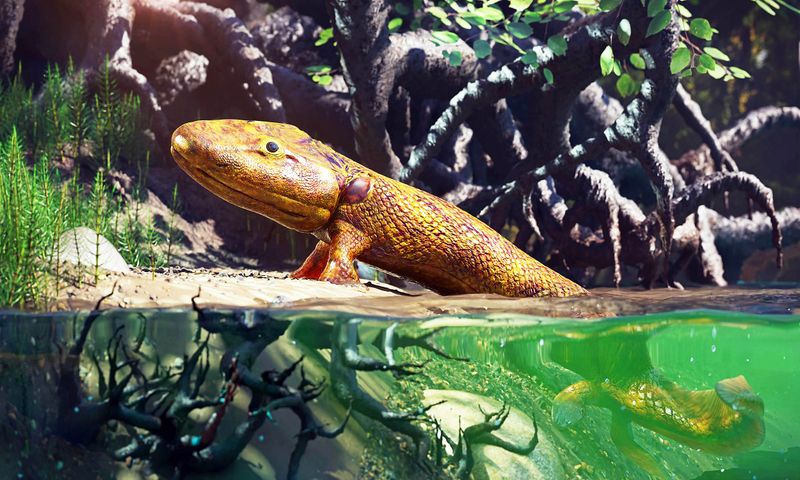
Around 360 million years ago, Ichthyostega made history as one of the first vertebrates to venture onto land. Unlike its predecessors, it had sturdy legs capable of supporting its weight out of water.
Fascinatingly, Ichthyostega moved more like a seal than a lizard. Its hind limbs couldn’t rotate forward for walking but instead pushed straight back, creating a unique swimming-crawling motion that worked both in water and on muddy shores.
3. Panderichthys: The Missing Link
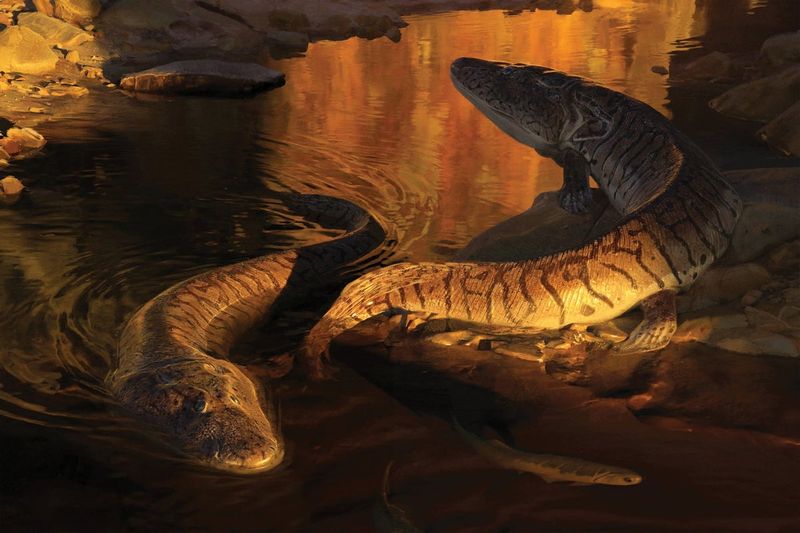
Swimming through ancient waters 380 million years ago, Panderichthys represents a crucial evolutionary step. Though lacking true fingers, its fins contained bone structures that would eventually evolve into hands.
Scientists call Panderichthys a “transitional form” because it shows features of both fish and tetrapods (four-legged animals). Its flattened body and eyes positioned on top of its head suggest it lived in shallow, murky waters.
4. Eusthenopteron: The Leg Blueprint Creator
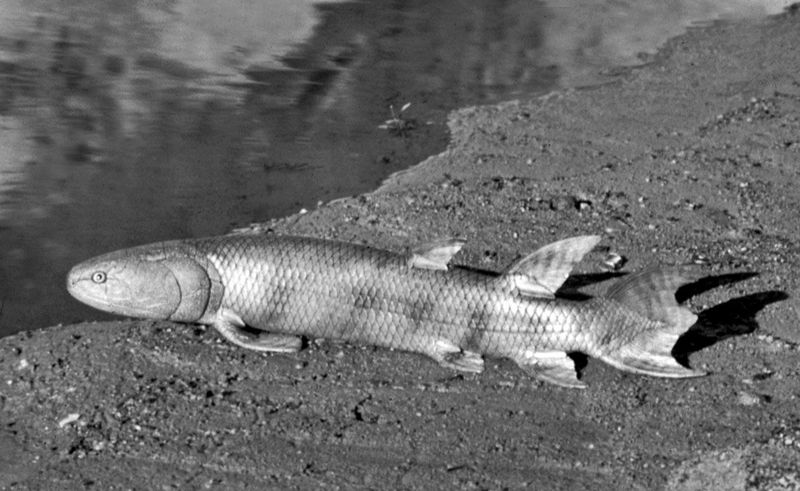
Swimming through Devonian waters 385 million years ago, Eusthenopteron looked mostly like a regular fish. Yet inside its fins hid something revolutionary: bones arranged in the same pattern as our arms – one bone, two bones, many bones, digits.
This blueprint for limbs appeared long before actual legs evolved! Though Eusthenopteron never walked on land, it carried the genetic instructions that would later make land exploration possible for its descendants.
5. Ventastega: The Crocodile-Headed Pioneer
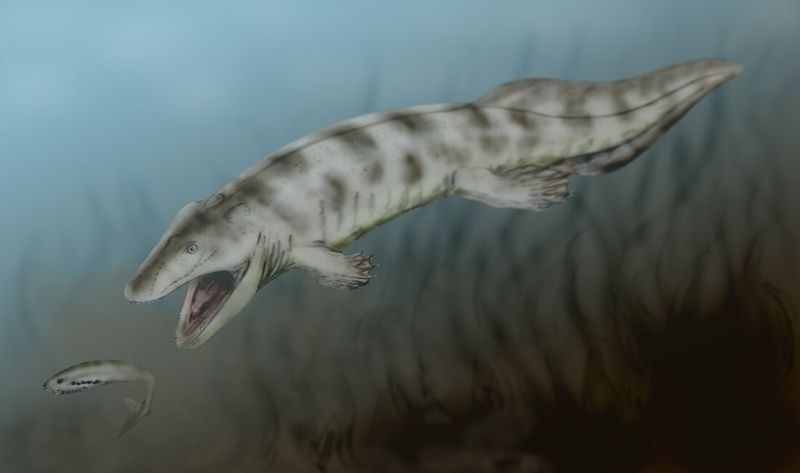
Ventastega curonica prowled coastal waters about 365 million years ago with its flat, crocodile-like head. Only partially known from fossils, scientists believe it had developed legs but retained fish-like features like gills.
As a transitional creature, Ventastega shows how evolution doesn’t happen in sudden jumps. Its mix of features – fish tail with tetrapod shoulders – demonstrates the gradual nature of evolutionary change, with some body parts evolving faster than others.
6. Tulerpeton: Six-Toed Walking Fish
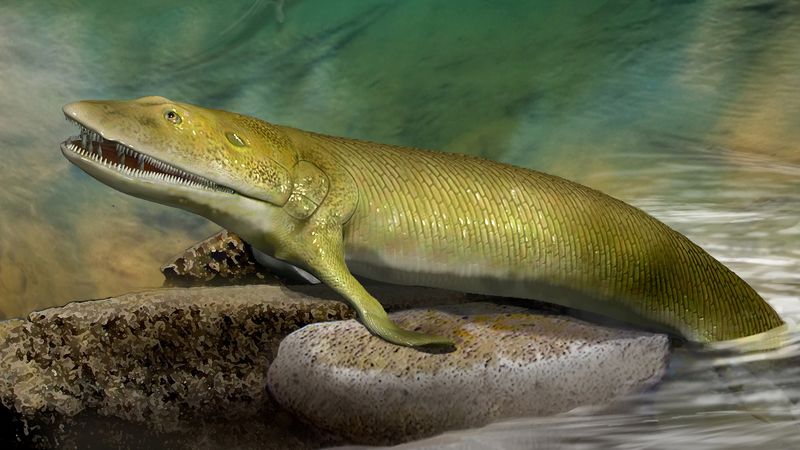
Tulerpeton curtum broke the five-finger rule 365 million years ago. This unusual creature sported six toes on each foot, challenging our understanding of digit evolution in vertebrates.
Living in what’s now Russia, Tulerpeton had more developed limbs than many of its contemporaries. Its leg bones show attachments for muscles that would have allowed it to push against land surfaces, making it one of the earliest creatures capable of limited terrestrial movement.
7. Pederpes: The First True Walker
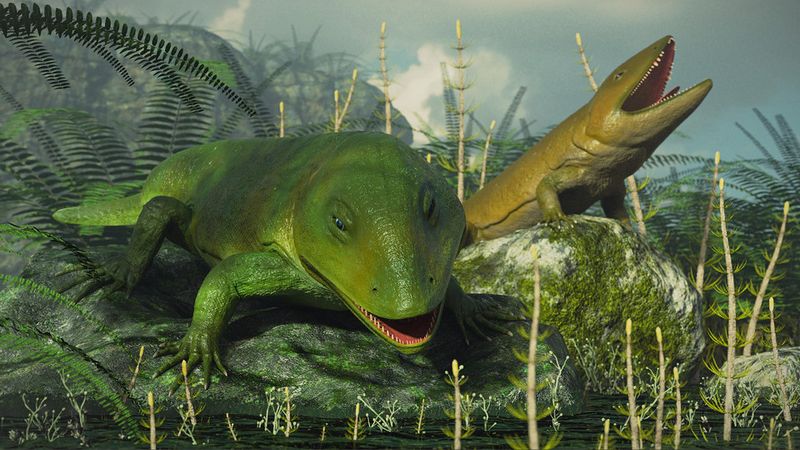
About 350 million years ago, Pederpes finneyae made a revolutionary change – it turned its feet forward! Earlier transitional forms had feet pointing sideways, making land movement awkward and inefficient.
Pederpes’ forward-facing feet allowed it to walk more effectively on land rather than just drag itself around. This seemingly small change marked a major evolutionary breakthrough, signaling the beginning of animals truly adapted for terrestrial life rather than just occasional visitors from the water.
8. Tiktaalik: The Original Fish With Feet
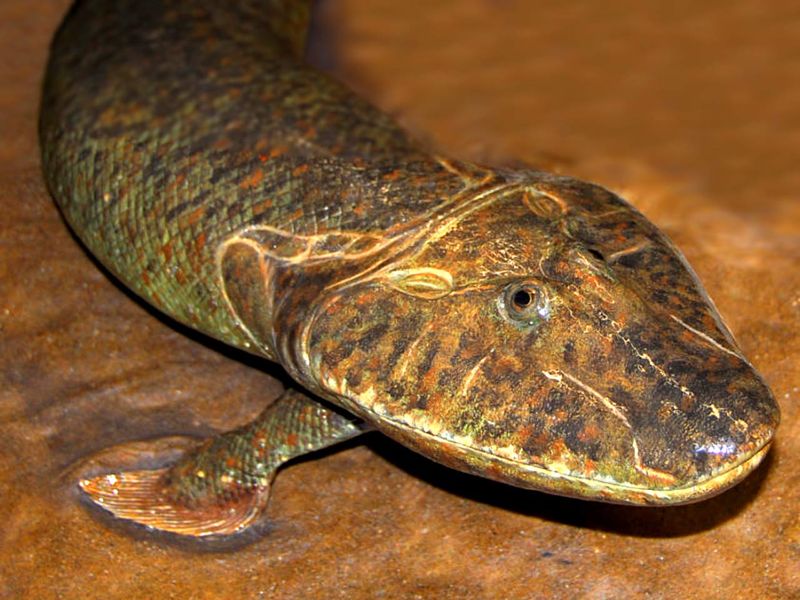
Tiktaalik roseae shocked scientists when discovered in 2004. This 375-million-year-old creature had fins that contained primitive wrist bones and fingers!
While still mostly aquatic, Tiktaalik could prop itself up on its front fins like push-ups. Its flat head and eyes on top suggest it lurked in shallow waters, peering above the surface for prey or predators.
9. Elginerpeton: The Giant Pioneer
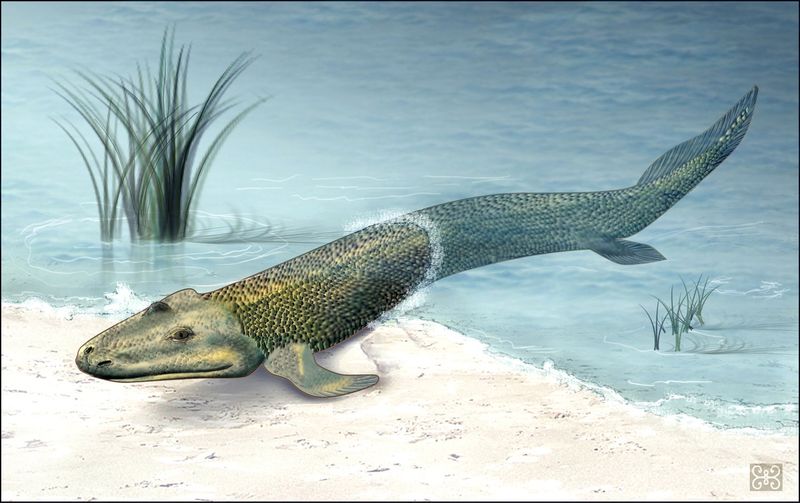
Elginerpeton pancheni stretched an impressive 5-6 feet long, making it a giant among its contemporaries 375 million years ago. Only fragments of this creature have been found, but they tell an amazing story.
Its leg bones show it had powerful hind limbs, possibly used for pushing through water and mud. As one of the earliest known tetrapods, Elginerpeton appears in the fossil record before many other walking fish, suggesting the move to land began earlier than scientists once thought.
10. Metaxygnathus: The Australian Walker
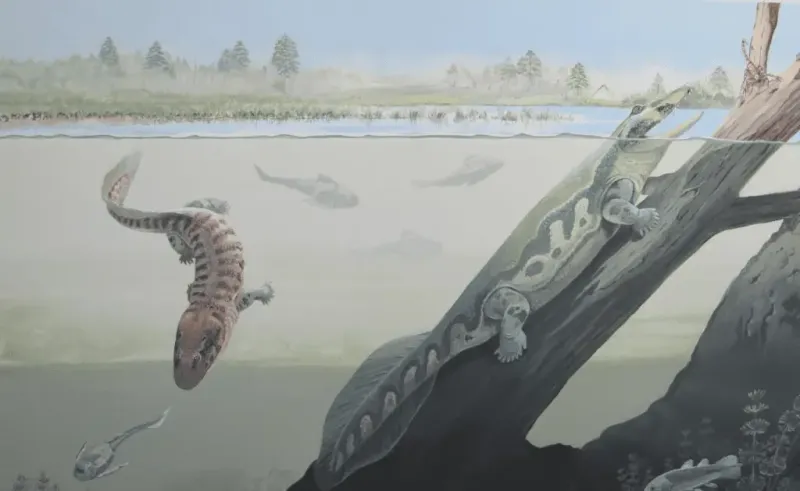
Down under in ancient Australia lived Metaxygnathus denticulus, known only from a single fossilized jawbone discovered in 1977. Despite this limited evidence, the jaw structure clearly identifies it as an early tetrapod.
What makes Metaxygnathus special is its location. Finding tetrapod fossils in Australia shows these walking fish weren’t isolated to one region but had spread globally by 360 million years ago, adapting to various environments across the ancient supercontinent Gondwana.
11. Hynerpeton: The Muscular Trailblazer
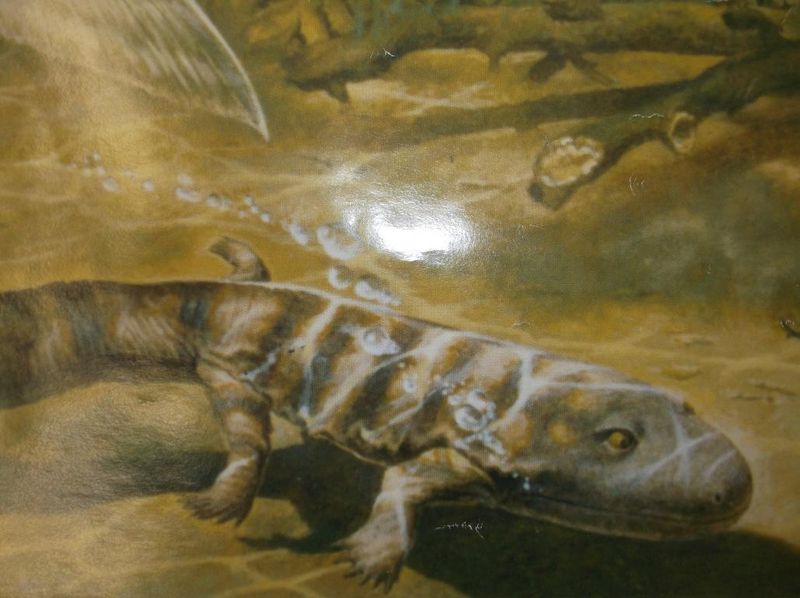
Hynerpeton bassetti made waves in Pennsylvania around 365 million years ago with its unusually strong shoulder bones. These robust structures supported powerful muscles, giving this creature serious upper body strength.
The enhanced shoulder girdle suggests Hynerpeton could push its body up and possibly move short distances on land. Discovered in 1993, this walking fish helped scientists understand how aquatic creatures developed the muscular systems necessary to overcome gravity and move effectively in a terrestrial environment.
12. Qikiqtania: The Evolutionary U-Turner
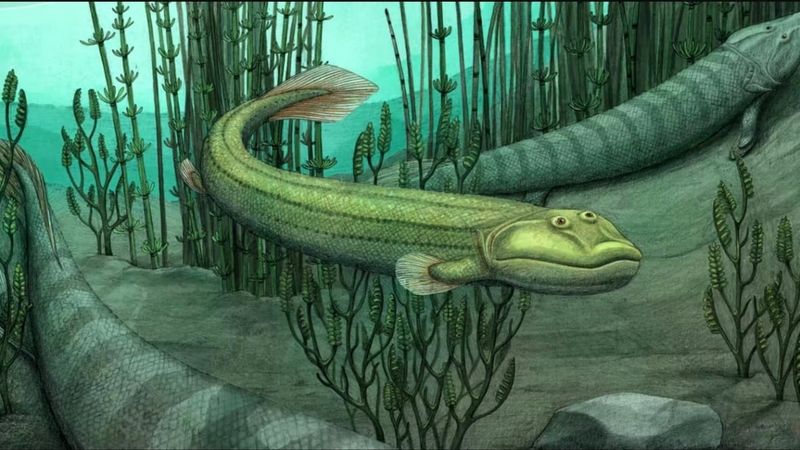
Discovered in 2004 but only described in 2022, Qikiqtania wakei presents a fascinating evolutionary plot twist. Unlike its relatives evolving toward land-living, this 375-million-year-old creature seems to have gone back to a fully aquatic lifestyle!
Though related to walking fish like Tiktaalik, Qikiqtania had paddle-like fins better suited for swimming than walking. This shows evolution isn’t a straight line – some lineages move toward land while their close relatives simultaneously adapt for better aquatic living.


